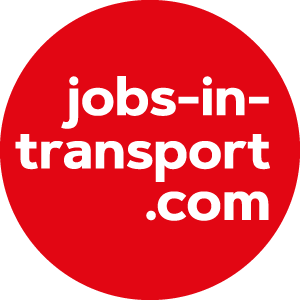

Traditionally, the public transport industry has struggled with the concept of interchange, seeing it as a necessary evil which its customers simply have to put up with even though interchange can be seen by passengers as removing them from the safety and comfort of the vehicle to a “desert area”. From the late 1990s, much research activity has been devoted to establishing concepts of best practice for public transport interchange – firstly with DETR and CILT from 1998 and European projects such as GUIDE. More recently, drawing on a changed environment which includes more powerful partnerships, the development of Intelligent Transport Systems, and the continued growth in rail travel, there has been a further push in efforts to improve interchanges. Examples of this are the TfL ‘Interchange Best Practice Guidelines’ and the ’Better Rail Stations’ independent but government-sponsored review, both produced in 2009.
But as two parallel trends emerge – a pressure to get the best value from tightly – constrained expenditure, and rapid developments in technology – we are now entering a third phase. This is where technology can serve to both automate processes and also to provide a richer customer experience. Interchanges are being recognised as key elements of the journey which could potentially assist in attracting people away from the car.
With pressure to grow revenue, interchanges have increasingly become retail environments, but this is not simply about generating income – it is as much about making the traveller feel looked after and offered choice and perceived comfort and quality. The interchange becomes a ‘hub’, a centre in its own right. Better information, and particularly up-to-the minute electronic and personalised information, is part of that process of caring for the passenger and making him feel valued.
A key result of the survey work for ‘Better Rail Stations’ was that physical station facilities only scored 50% satisfaction with customers. It also become apparent that clear customer standards needed to exist for rail stations but that a one-size fits all approach was inappropriate. What was needed was a robust hierarchy for categorizing stations, such as used in several other countries, with customer standards matched to the different categories. ‘Better Rail Stations’ has created the first national station standards for Britain, for each of the six station categories, and proposed that these be built into all future train company franchises.
Its coverage of rail station information issues is principally about signage (both printed and electronic), availability of staff to give information, electronic Help Points, and real-time information. However, there are others of its proposals which have information implications, even though they are not directly about information itself. Recently, CEN, the European Committee for Standardisation, has developed the IFOPT Specification (‘Identification of Fixed Objects in Public Transport’) which describes the detailed structure of a Stop Place, such as a rail or coach station, including entrances, pathways, and accessibility limitations. With IFOPT it therefore becomes possible to provide electronic information on station facilities which ‘Better Rail Stations’ recommends should be enhanced; such as cycle hubs, access for disabled people, car parking facilities, and bus stops in relation to the rail entrance. Work is currently being undertaken by members of the UK’s Public Transport Information Coordination Group to develop a UK-focussed extract of IFOPT.
Similarly to ‘Better Rail Stations’, the hierarchy principle can also be applied to all types of public transport interchange. Different types of interchange, in different type of locations and surroundings, need different degrees of detail and comprehensiveness of information and need different levels of facilities. This was recognised by the recent European PROCEED research project which produced guidelines for high-quality urban bus services.
At ‘lower-level’ interchanges passengers will need to do less ‘information seeking’ activity because the choices are fewer, the crowds are less and the distances within the interchange are smaller. Just as pedestrian flows in stations are modelled to reduce congestion and increase passenger safety, information flows need to be modelled to assist the best design of an interchange in terms of delivery of information to passengers. Work on the design of the new Wolverhampton Bus Station considered Intelligent Transport Systems from the outset, with current best practice and user need being researched and integrated into a virtual reality model. Earlier work that I carried out for the European Commission’s CODE project to synthesise existing research findings analysed passenger information-seeking as five different activities: ‘Journey Creation’, ‘End Linkages’, and, within the interchange, ‘Verification’, ‘Anticipation’ and ‘On-the-Spot Orientation’. In general, the passenger at an interchange checks that things are going as planned, looks out for possible service disruptions and checks that he knows where to go relative to where he is now. To make his travels he needs firstly the means to travel for the main part of the journey (i.e. he plans timetables and makes his ticket purchase), and then secondly have a picture in his mind of where to go at the end of his journey. While en-route he checks schedules for the journey itself, expects to be alerted if there is journey disruption (and possibly get alternative routings), and finally he looks for direction signs.
These requirements are unique to the individual traveller. In the future, with an interchange that has been described according to an IFOPT specification, with a ‘smart’ phone that has been fed the traveller’s personal travel itinerary, and with ‘smart posters’ that can feed information to his phone using contactless Near Field Communication (NFC) as he moves round the interchange, he can be guided ‘intelligently’ around it and provided with personalised alerts.
Mobile devices are becoming critically important as the personal element in an ‘Intelligent Interchange’ although smartcards will continue to have a major role, not least because of the great success of Oyster and the aspirations for a national public transport smartcard. Some commentators consider that by 2025 the paper travel ticket will have practically vanished, being replaced by a virtual ticket or barcode that can be scanned in via a mobile device or in some cases purchased on the train itself. With over 80% of rail travellers currently purchasing their tickets at stations, this sea-change potentially frees up station space to allow greater revenue-generating customer services.
The fully ‘Intelligent Interchange’ is likely to be characterised by a number of features; both ‘hard’ and ‘soft’. Hardware will include Barcode Readers, NFC devices, electronic kiosks and quite possibly publicly-accessible but security-controlled areas accessed by personal mobile devices. Software and services will include detailed route planning within the station, faster information access, payment systems and information retrieval, and could include features such as targeted personal advertising, passenger counting services and taxi-sharing services based on common destinations. It is also quite conceivable that ‘social networking’ will have a role in the ‘Intelligent Interchange’ with ‘communities’ and ‘socially networked events’ being based around particular times and locations within the travel ‘hub’.
Whilst evidence of revenue increases from information improvements alone is not easy to find it is very clear that station modernisation can have dramatic effects on customer satisfaction and good direct effects on revenue and, as argued earlier, information improvements are a key element of station upgrades. Northern Rail conducted market research before and after modernising four of its stations and this showed satisfaction levels up from 48 to 76 percent and income rising by 3 percent. There is also plenty of anecdotal evidence that smartphone public transport information apps both increase traveller satisfaction and that users are prepared to pay for them.
‘Better Rail Stations’ outlined a path to implementation of Minimum Station Standards as a series of KPIs with agreed thresholds of achievement. But as far as information is concerned, not only is infrastructure such as kiosks, ‘smart posters’, barcode readers, low-cost RTI signs etc. important; what is also critical is Open Data to enable developers to produce smartphone apps. And the equipping of buses and coaches with infrastructure such as smartcard readers and AVL equipment and the installation of ‘back office’ systems, is also essential to ensure that the ‘Intelligent Interchange’ concept is not restricted to rail stations but also covers interchanges for other public transport modes.
One critical element of the ‘investment package’ that must be put in place if the ‘Intelligent Interchange’ is to be delivered is the gathering of data to populate an IFOPT ‘stop place’ model for each significant interchange. The situation of public finances now is different from what it was when the bus stop database was being populated at the introduction of Traveline. It will be important that data collection funding mechanisms are devised which enable not only rail stations to be covered but also coach stations, bus stations and Park & Ride sites. If these are all achieved the potential to raise customer satisfaction, and to deliver value-added services is very significant.
Some of these ideas will be developed further by a range of senior industry speakers at the 10th Annual UK & European Rail Stations Conference to be held in London, on 1st March 2011.

TransportXtra is part of Landor LINKS
© 2025 TransportXtra | Landor LINKS Ltd | All Rights Reserved
Subscriptions, Magazines & Online Access Enquires
[Frequently Asked Questions]
Email: subs.ltt@landor.co.uk | Tel: +44 (0) 20 7091 7959
Shop & Accounts Enquires
Email: accounts@landor.co.uk | Tel: +44 (0) 20 7091 7855
Advertising Sales & Recruitment Enquires
Email: daniel@landor.co.uk | Tel: +44 (0) 20 7091 7861
Events & Conference Enquires
Email: conferences@landor.co.uk | Tel: +44 (0) 20 7091 7865
Press Releases & Editorial Enquires
Email: info@transportxtra.com | Tel: +44 (0) 20 7091 7875
Privacy Policy | Terms and Conditions | Advertise
Web design london by Brainiac Media 2020